Amanda Westley & Kudditji Kngwarreye Spirit of Place
In this next exhibition we are bringing together two very different artists showing together in Gallery 1. Amanda Westley is a young artist having her second exhibition away from her home state of South Australia. Kudditji Kngwarreye was one of the very well known artists from Utopia in Central Australia.
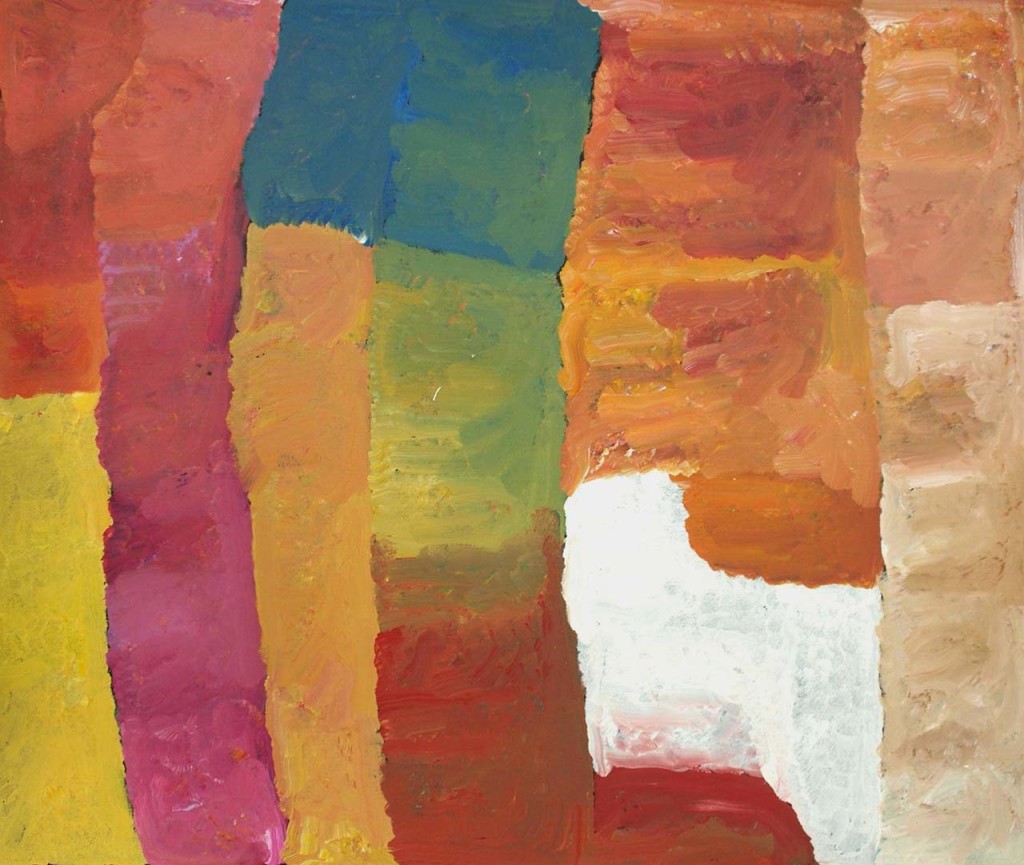

Both artists focus on the structures of their country. In many other ways they could be regarded as extreme opposites. Kudditji Kngwarreye was born around 1928 and lived until 2017. Amanda is a young artist living on the south coast who paints the landscape surrounding her. Kudditji was a desert man, a custodian for the Emu Dreaming sites on Country. Amanda works with dots structured in bands of colour. Kudditji pushes the paint around and develops blocks of colour that form the construct for his paintings.
Here we bring together the old and new, younger and now deceased artist, a dot painter compared to someone who paints in broad planes of colour. Both are wonderfully skilled in their use of colour. Amanda, coming from the coastal areas explores the way the sea impacts on the coastline as well as how the land and the sea interact with each other. Kudditji focuses on the way the land changes under different seasons, different times of day, through rain and drought, fire, cloud, wind. All the elements that have a strong impact on Country.
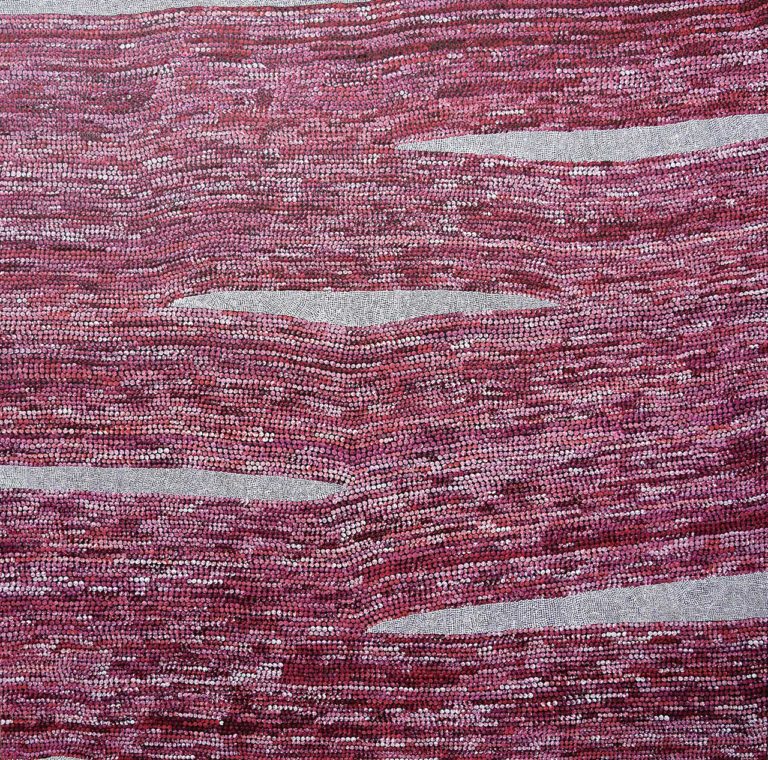

I feel that the exhibition is an indicator of how broad the classification of Aboriginal art has become. You can put two varied artists together in one exhibition and have diverging points and comparisons...a great difference in approach and history and execution, but between the two of them there's a synergy across the artworks.
It is wonderful to see how these two artists approach where they live and the elements in nature that surround them. They come up with synchronistic versions of their Country while being widely separated in time and place. Yet their work manages to be fabulously, artistically connected.
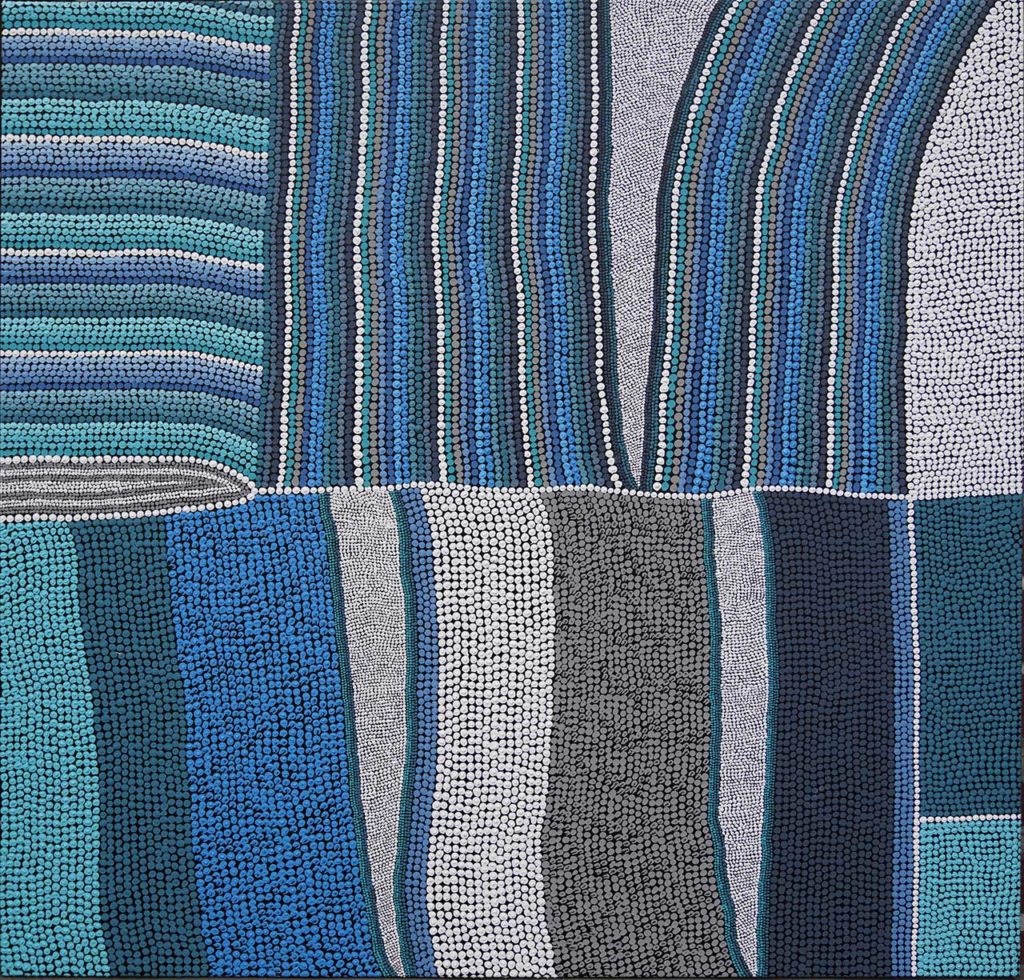
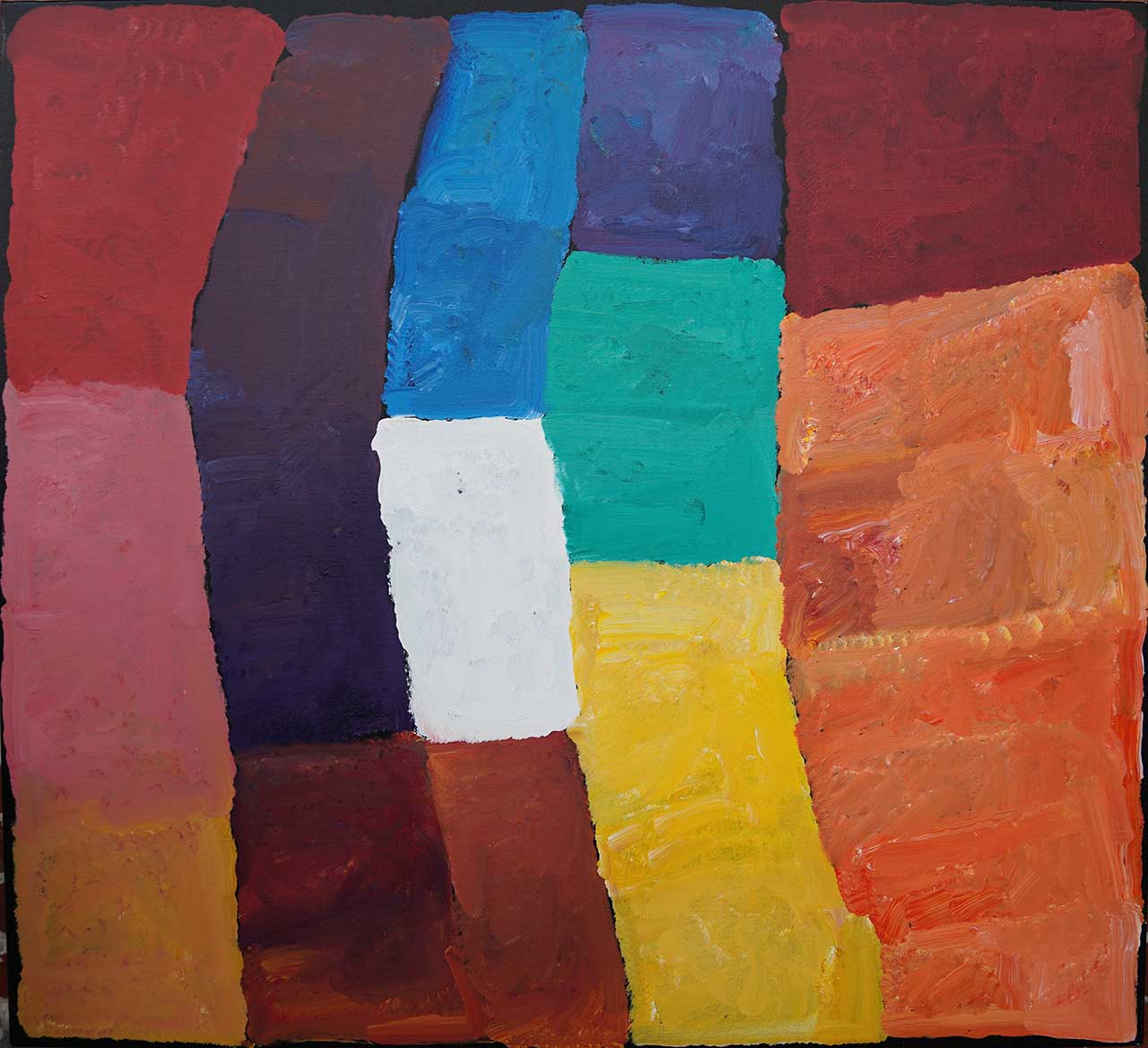
Even though these two artists never met, when you put them together in an exhibition like this, you can see they meet at an artistic level. This is a fantastic tribute to a young artist like Amanda Westley. She had her first solo exhibition at Japingka just over a year ago and now continues to create imagery about an Australian landscape that we find a quite intriguing and dramatic.
(Above, right) This is an earlier painting by Kudditji from around 2006 - it's an Emu Dreaming story. Kudditji Kngwarreye was a custodian on Utopia homelands for the Emu Dreaming sites. These are the young men's initiation sites and in the middle of this painting, as in many of these other works from this era, there's an area of dark green marked in. We can associate this with the colour of the emu egg. It's the male emus that incubate the nest. They sit on the nest and the female returns to the bush. Hence the role of the emu life-cycle in nature creates a setting for the male initiation ceremonies.
The role of the male emu in incubating the eggs is an interesting element in the ceremonial structure for Kudditji's people. It also provides a clue to his paintings of these landscapes that otherwise have a red earthy feel to them, and then this extraordinary patch of deep green. The whole story is symbolised in terms of colour and structure to reflect the identity of the artist, the custodian of Emu Dreaming.
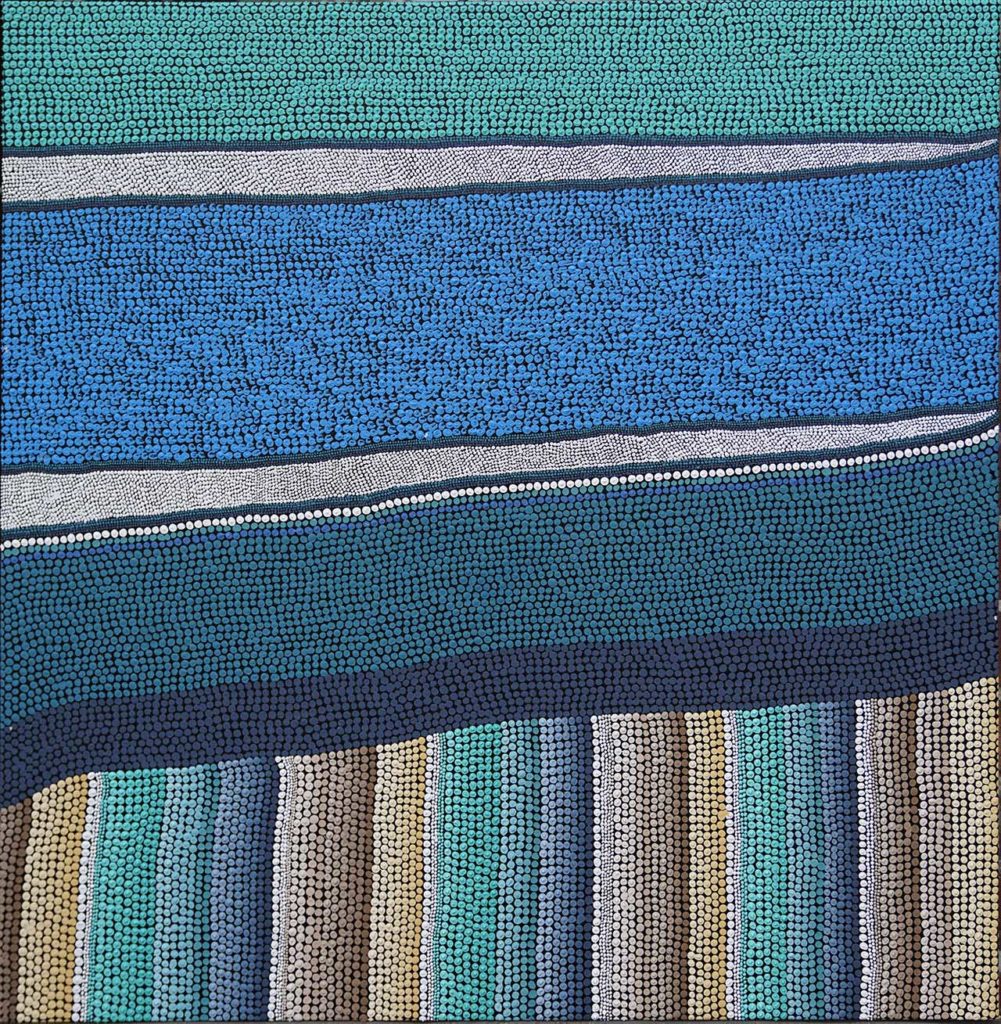
Amanda's paintings from the Fleurieu Peninsula and the Coorong region evoke a distinctive landscape. It's where the Murray River flows out into the Southern Ocean south-east of Adelaide. For me this painting captures that sense of the sandbanks built up where the river water hits the ocean. There are combinations of colours that create the sense of the earth forming into wetlands, a neutral zone before it reaches the deep colours of the ocean. Although this painting reads as an abstract artwork, for me it is a wonderful image of the Coorong. It evokes the way those waters interact and create this mini-environment that is so particular to that part of the world.
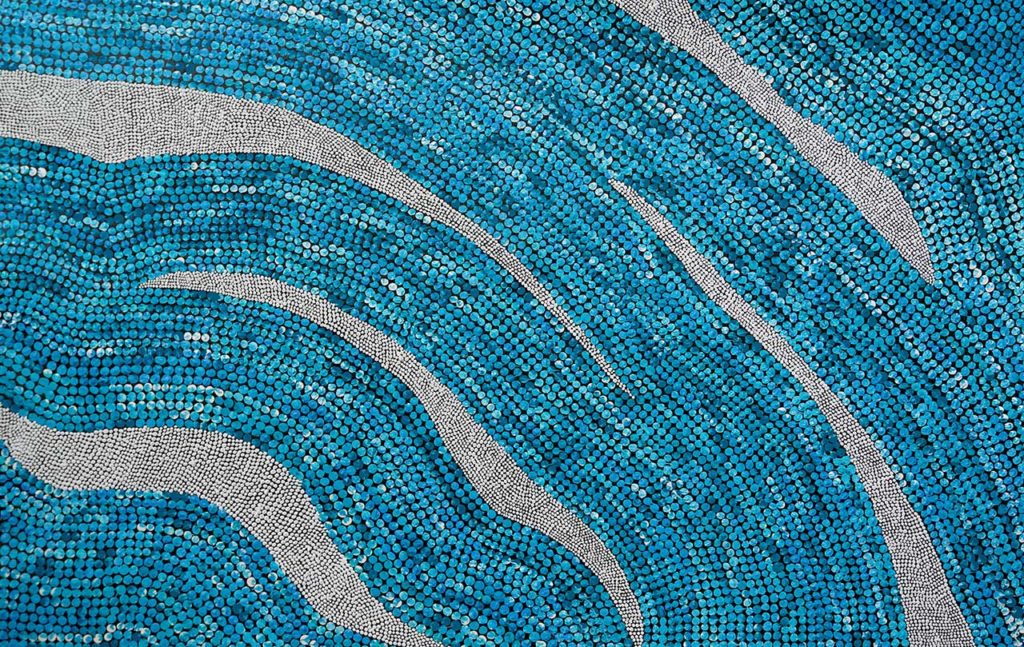
This painting above by Amanda titled 'Prangwuthi - Water' is different structurally to her other paintings in the show. It has this rhythm and flow of the waters ebbing, like a tide pulling back from the ocean. It has sandbars mapped out in very fine dots against the multicoloured dots of the blue of the ocean. This feels like tide lines, like the ebb and flow of water. It's a classic amalgamation of a landscape with that particular emphasis on rhythm that Aboriginal artists find in the landscape, in the natural environment. These kinds of patterns that nature provides us form an extraordinary resource for Indigenous artists when they're depicting landscape.
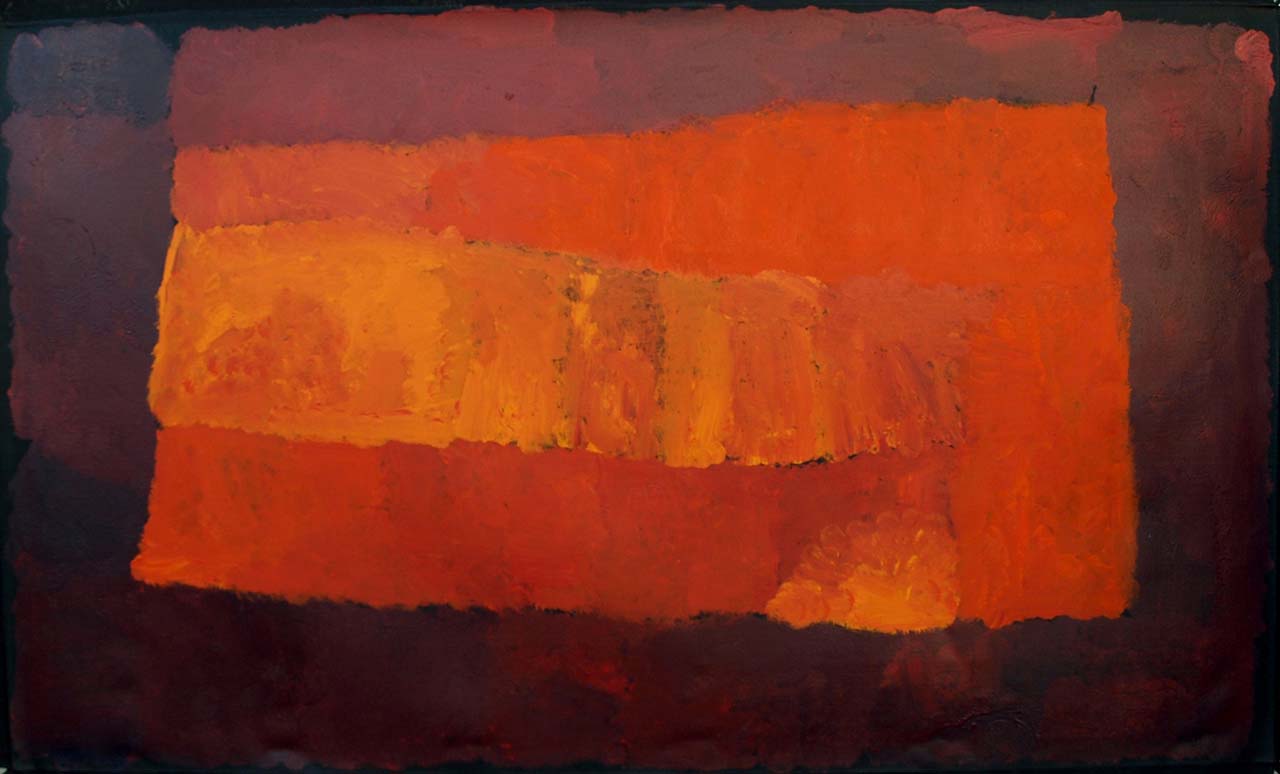
One of the major series that Kudditji Kngwarreye painted was the Fire series. It focuses on the role of fire on Country. This painting has that central rectangle motif which often describes the ceremonial grounds on the Emu Dreaming sites. But in this case the country is being burned off, so the entire painting is a range of reds from almost black-red through to tangerine orange and pale orange. The painting maintains the structure with the ceremonial ground and the reference to the Emu Dreaming sites and male initiation ceremony. But the land is completely transformed in colour and look by the subject that is occupying the artist's mind. The role of fire on country is to cleanse and burn back the old and allow the new to come forth and grow and bloom.
Read: Amanda Westley at Home on the Coorong
View:
Colours of Ngarrindjeri Country (2022)
Spirit of Place - Amanda Westley & Kudditji Kngwarreye
Amanda Westley - Colours of Ngarrindjeri Country (2022)
